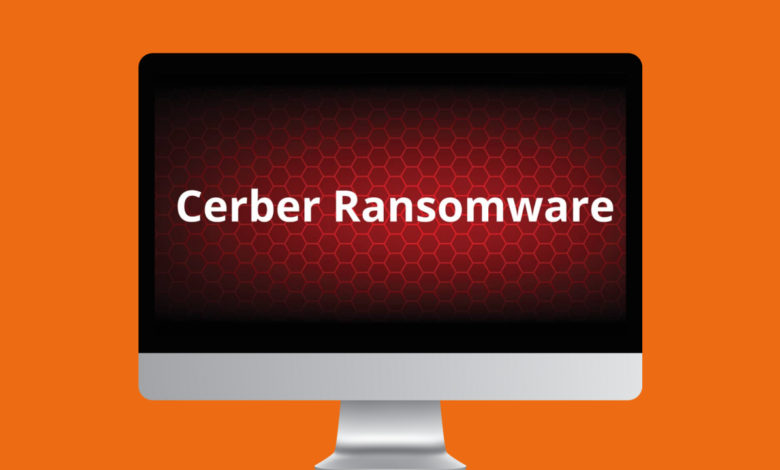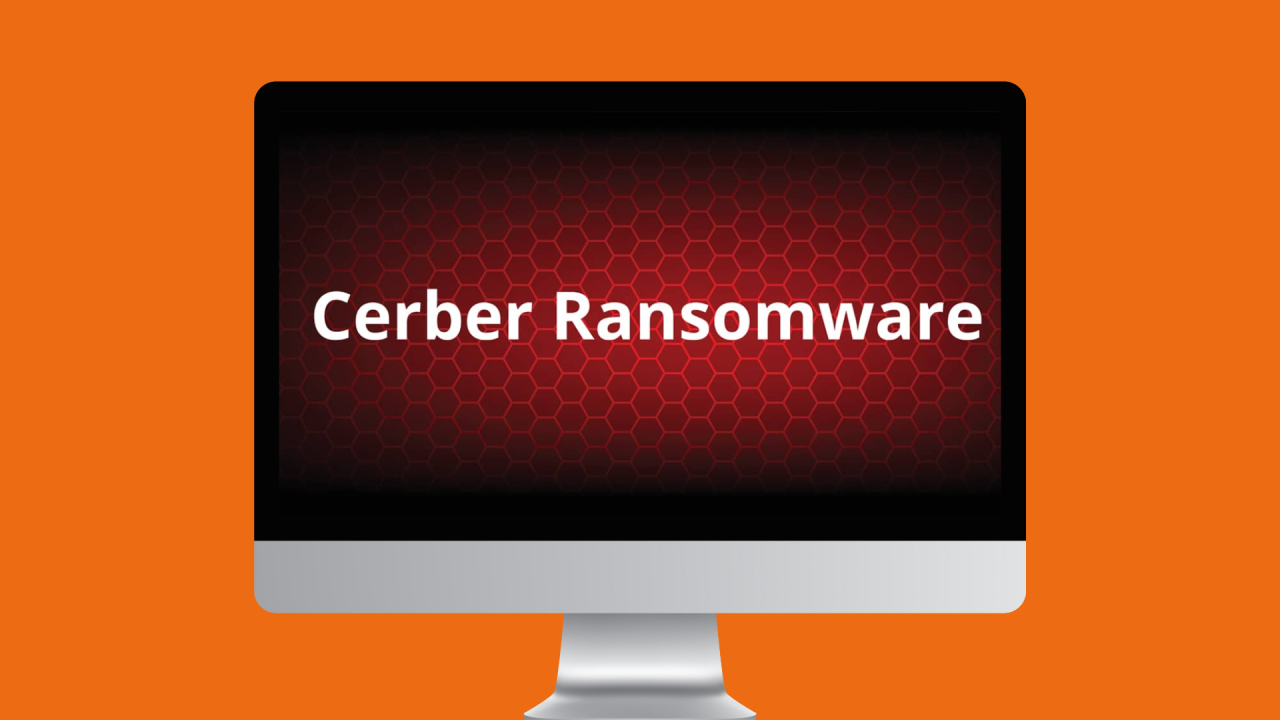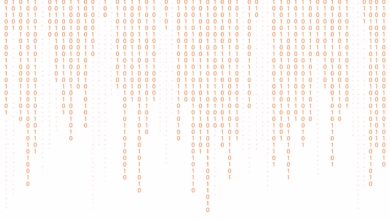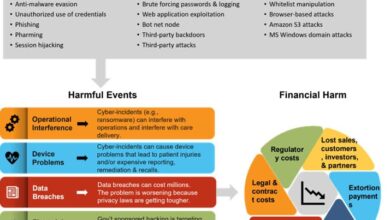
Cerber Ransomware Targets Atlassian Confluence Servers
Cerber ransomware hackers target atlassian confleunce servers – Cerber ransomware hackers targeting Atlassian Confluence servers is a serious threat, impacting businesses worldwide. This attack highlights the vulnerability of even well-established systems to sophisticated cyberattacks. We’ll delve into the technical details of the Cerber ransomware, explore the specific vulnerabilities exploited in Atlassian Confluence, and examine the attack vector used to gain initial access. Ultimately, we’ll discuss preventative measures and mitigation strategies to protect your systems from similar attacks.
The scale of this threat is significant, as the widespread use of Atlassian Confluence makes many organizations vulnerable. Understanding how Cerber works, its impact, and the steps to prevent infection are crucial for anyone managing online systems. We’ll break down the complexities in a way that’s easy to understand, regardless of your technical expertise. This isn’t just about technical jargon; it’s about protecting your business and your data.
Cerber Ransomware

Cerber, a notorious ransomware family, wreaked havoc on countless systems globally before its creators were apprehended. Understanding its technical workings is crucial for bolstering cybersecurity defenses and mitigating future attacks. This post delves into the technical aspects of Cerber, exploring its encryption methods, ransom demands, and infrastructure.
Technical Mechanisms of Cerber Ransomware
Cerber employed a sophisticated multi-stage infection process. Initially, it often spread via malicious email attachments or compromised websites. Once executed, it would leverage system privileges to encrypt files on the infected machine. This encryption process wasn’t limited to specific file types; it targeted a broad range, rendering data inaccessible. The malware also disabled shadow copies, preventing data recovery through system restore points.
Furthermore, Cerber was known for its ability to spread laterally within a network, compromising additional systems. This was achieved through exploiting vulnerabilities and leveraging network shares.
Cerber’s Encryption Methods
Cerber utilized AES-256 encryption, a robust symmetric encryption algorithm. This means the same key was used for both encryption and decryption. The encryption key was then encrypted using RSA-2048, an asymmetric algorithm, making it significantly harder to crack without the private key held by the attackers. The victim’s unique encryption key was then sent to the attacker’s command-and-control (C&C) server, making decryption dependent on the attackers’ cooperation.
The encrypted files were typically appended with the “.cerber” extension.
Ransom Demands and Payment Methods
Cerber’s ransom demands varied depending on factors like the number of encrypted files and the perceived value of the victim’s data. Ransom amounts were often presented in Bitcoin, a cryptocurrency that offers a degree of anonymity to the attackers. Payment instructions were typically included in a ransom note displayed on the victim’s screen after encryption. The attackers would provide a unique decryption key upon receiving the payment, theoretically enabling the victim to recover their files.
The Cerber ransomware attacks targeting Atlassian Confluence servers highlight the urgent need for robust security measures. Building secure, resilient applications is crucial, and exploring modern development approaches like those discussed in this insightful article on domino app dev the low code and pro code future could help organizations better protect themselves. Ultimately, preventing these types of ransomware attacks requires a multi-faceted approach, including secure coding practices and strong security protocols.
Cerber’s Command-and-Control Infrastructure
Cerber’s C&C infrastructure played a vital role in its operation. The C&C servers acted as central hubs, receiving encrypted keys from infected machines and providing decryption keys in exchange for payment. These servers were often hosted on compromised or dedicated servers located in various countries, making tracing and takedown efforts challenging. The decentralized nature of the C&C infrastructure made it resilient to takedown attempts; even if one server was shut down, others could continue operating.
Comparison of Cerber with Other Ransomware Families
The following table compares Cerber with other prominent ransomware families, highlighting key similarities and differences:
| Ransomware Family | Encryption Method | Ransom Payment | Distribution Method |
|---|---|---|---|
| Cerber | AES-256 (symmetric), RSA-2048 (asymmetric) | Bitcoin | Malicious email attachments, compromised websites |
| WannaCry | AES | Bitcoin | EternalBlue exploit |
| NotPetya | Various | No ransom demand (destructive malware) | Supply chain attack |
| Ryuk | AES | Bitcoin | Trickbot malware |
Atlassian Confluence Server Vulnerability
The recent Cerber ransomware attacks targeting Atlassian Confluence servers highlight a critical vulnerability in the widely used collaboration platform. These attacks weren’t random; they exploited specific weaknesses in Confluence’s security architecture, allowing malicious actors to gain unauthorized access and deploy ransomware. Understanding these vulnerabilities is crucial for organizations relying on Confluence to prevent similar incidents.Atlassian Confluence Server vulnerabilities exploited by Cerber primarily leveraged unpatched instances.
While the exact vulnerabilities exploited in each specific attack may vary depending on the version of Confluence and its associated plugins, the attacks often centered around exploiting known vulnerabilities related to the Confluence server’s handling of user input and authentication mechanisms. These could include things like improper input validation, allowing attackers to inject malicious code or commands. Additionally, outdated plugins or insufficiently secured configurations could further amplify the risk.
Security Flaws Allowing Ransomware Access
The success of Cerber ransomware attacks on Confluence servers stemmed from a combination of factors. First, many organizations failed to apply timely security updates, leaving their servers vulnerable to known exploits. Second, insufficient access control and authentication mechanisms allowed attackers to bypass security measures and gain administrative privileges. Third, a lack of robust logging and monitoring made it difficult to detect and respond to suspicious activity in a timely manner.
In essence, a chain of weaknesses allowed the attackers to successfully breach and compromise the system.
Potential Impact on Affected Organizations
A successful Cerber ransomware attack on a Confluence server can have devastating consequences for affected organizations. The immediate impact is the encryption of critical data stored within Confluence, including project documents, team communication logs, and other sensitive information. This disruption can halt business operations, leading to significant financial losses. Beyond the direct impact of data encryption, organizations face reputational damage, potential legal liabilities, and the substantial costs associated with recovery efforts, including data restoration, system remediation, and incident response.
The disruption to workflows and productivity can take weeks or even months to fully recover from.
Hypothetical Scenario: Cerber Attack on Confluence Server
Imagine a mid-sized marketing agency relying heavily on Confluence for project management and internal communication. They are running an outdated version of Confluence and have not implemented strong password policies or multi-factor authentication. An attacker discovers a known vulnerability in this outdated version. They exploit this vulnerability, gaining access to the server. Once inside, they deploy Cerber ransomware, encrypting all data within the Confluence instance.
The agency is now unable to access crucial project files, internal communications, and client information. The attack results in lost revenue, disrupted projects, and significant costs associated with recovery and remediation.
Best Practices for Patching and Securing Atlassian Confluence Servers
Protecting Confluence servers from ransomware requires a multi-layered approach. First and foremost, regularly apply all security updates and patches released by Atlassian. This includes not only updates to the core Confluence application but also updates for all installed plugins. Implement strong password policies, enforce multi-factor authentication, and regularly review and restrict user access privileges. Establish a robust security monitoring system with intrusion detection and prevention capabilities to detect and respond to suspicious activity in real time.
Regularly back up your Confluence data to an offline, secure location to enable swift recovery in case of a ransomware attack. Finally, conduct regular security audits and penetration testing to identify and address vulnerabilities before they can be exploited.
The Attack Vector and Initial Compromise

The Cerber ransomware attacks targeting Atlassian Confluence servers leveraged known vulnerabilities to gain initial access. These attacks highlight the critical importance of patching systems promptly and implementing robust security measures to prevent exploitation. Understanding the attack vector is crucial for organizations to bolster their defenses and mitigate future risks.The likely methods used involved exploiting publicly known vulnerabilities in the Confluence Server software.
Hackers likely scanned the internet for vulnerable servers, identifying those that hadn’t been patched against known exploits. Once a vulnerable server was identified, the attackers likely used automated tools to attempt exploitation. Successful exploitation would provide initial access, allowing the attackers to move laterally within the network and ultimately deploy the Cerber ransomware.
Exploitation of Confluence Server Vulnerabilities
The attack chain typically begins with the identification of a vulnerable Confluence Server. This is often accomplished through automated vulnerability scanning tools that probe the internet for systems running outdated versions of Confluence. Once a vulnerable server is found, attackers use exploits – pre-written code designed to take advantage of known security flaws – to gain unauthorized access.
These exploits often leverage flaws in Confluence’s authentication or input validation mechanisms. Successful exploitation typically grants the attacker remote code execution capabilities, giving them control over the server.
Lateral Movement and Privilege Escalation
After gaining initial access, the attackers typically employ lateral movement techniques to spread within the victim’s network. This might involve exploiting other vulnerabilities on connected systems or using stolen credentials to access other accounts. Privilege escalation techniques are also frequently used to gain higher-level access, allowing the attackers to perform actions such as accessing sensitive data or disabling security software.
Ransomware Deployment and Exfiltration
Once the attackers have achieved sufficient access and control, they deploy the Cerber ransomware. This usually involves uploading the ransomware payload to the compromised server and executing it. The ransomware encrypts critical files, rendering them inaccessible to the victim. In some cases, attackers may also exfiltrate sensitive data before deploying the ransomware, using this data as leverage or selling it on the dark web.
Hypothetical Attack Timeline
A hypothetical attack might unfold as follows:* Day 1: Attackers scan for vulnerable Confluence servers.
Day 2
A vulnerable server is identified and exploited. Initial access is gained.
Day 3-4
Lateral movement occurs within the network. Privileges are escalated.
Day 5
Cerber ransomware is deployed, encrypting critical files. Data exfiltration may also occur.
Day 6-7
Ransom demand is delivered.
Comparison of Attack Vectors
While this specific attack utilized a known Confluence Server vulnerability, other ransomware campaigns have employed various attack vectors. Some examples include phishing emails containing malicious attachments, exploiting vulnerabilities in other applications (e.g., Microsoft Exchange), or leveraging compromised credentials obtained through credential stuffing or brute-force attacks. The common thread is the exploitation of a weakness in the victim’s security posture.
The specific attack vector chosen often depends on the attacker’s resources and the target’s vulnerability profile. Many modern ransomware attacks rely on a combination of techniques to maximize their chances of success.
Impact and Aftermath of the Attack
A successful Cerber ransomware attack on an Atlassian Confluence server, especially one exploiting a known vulnerability, can have devastating consequences for an organization. The impact extends far beyond the immediate disruption of services; it can lead to significant financial losses, reputational damage, and long-term operational challenges. The severity depends on factors like the amount of data encrypted, the organization’s preparedness for such an event, and the speed and effectiveness of their response.The potential consequences of a successful Cerber attack are multifaceted and far-reaching.
The encrypted data could range from sensitive customer information and intellectual property to critical business documents and financial records. The disruption to operations can halt production, cripple communication, and disrupt essential services, leading to lost revenue and productivity.
Data Compromised or Encrypted
Cerber ransomware targets various data types, indiscriminately encrypting files crucial for business operations. Examples include: customer databases containing personally identifiable information (PII), such as names, addresses, credit card details, and social security numbers; internal documents containing confidential business plans, financial statements, and intellectual property; project files, design specifications, and source code; email archives; and backups, potentially rendering recovery efforts more difficult.
The breadth of data impacted directly correlates with the severity of the consequences. A breach involving customer PII, for example, could trigger significant regulatory fines and legal action under GDPR or CCPA.
Financial and Reputational Damage
The financial repercussions of a Cerber ransomware attack can be substantial. These costs include the direct ransom payment (if paid), the expenses associated with data recovery and system restoration, the cost of hiring cybersecurity experts, the loss of revenue due to business disruption, and potential legal fees resulting from data breaches and regulatory investigations. Beyond the direct financial losses, the reputational damage can be equally, if not more, significant.
News of a ransomware attack can severely damage an organization’s credibility, leading to loss of customer trust, damage to brand image, and difficulties attracting investors or securing future contracts. The long-term impact on customer relationships and market standing can be profound. For instance, a company like Equifax, which experienced a massive data breach, faced significant financial penalties and a lasting decline in investor confidence.
Recovery Process Following a Ransomware Attack
The recovery process following a ransomware attack is complex and time-consuming. It involves several key steps:
First, it’s crucial to isolate the affected systems to prevent further spread of the ransomware. This involves disconnecting infected machines from the network and disabling any shared resources. Next, a thorough forensic investigation should be conducted to determine the extent of the breach and identify the attack vector. This investigation is crucial for preventing future attacks. Following this, data restoration begins.
This may involve restoring data from backups, if available and untainted, or employing specialized data recovery tools. Finally, a comprehensive system cleanup is necessary, which involves removing the ransomware, patching vulnerabilities, and implementing enhanced security measures. This might include upgrading antivirus software, strengthening network security protocols, and implementing multi-factor authentication.
Steps Organizations Should Take After a Ransomware Attack
Organizations need a robust incident response plan in placebefore* a ransomware attack occurs. However, immediate action is vital
after* an attack. The following steps are crucial
- Contain the attack: Immediately isolate affected systems to prevent further spread.
- Preserve evidence: Document everything related to the attack for forensic analysis.
- Notify relevant authorities: Report the incident to law enforcement and regulatory bodies as required.
- Engage cybersecurity professionals: Seek expert help for incident response, data recovery, and system cleanup.
- Restore data from backups: If possible, restore data from clean backups. Verify the integrity of the restored data.
- Implement enhanced security measures: Strengthen network security, update software, and enforce strong password policies.
- Communicate with stakeholders: Inform affected parties (customers, partners, employees) about the incident.
- Conduct a post-incident review: Analyze the attack to identify vulnerabilities and improve security practices.
Prevention and Mitigation Strategies
Preventing Cerber ransomware attacks on Atlassian Confluence servers requires a proactive and multi-layered security approach. This goes beyond simply installing antivirus software; it demands a comprehensive strategy encompassing regular updates, robust access controls, and a well-defined backup and recovery plan. Ignoring any of these aspects significantly increases your vulnerability.Regular software updates and patching are paramount. Vulnerabilities are constantly being discovered and exploited by malicious actors.
Failing to patch known vulnerabilities leaves your system exposed to attacks like the one leveraging the Atlassian Confluence vulnerability exploited by the Cerber ransomware. A timely patching schedule, coupled with automated update mechanisms where possible, is critical.
Regular Software Updates and Patching
Promptly applying security patches released by Atlassian and other software vendors is the first line of defense. This includes not only the Confluence server itself but also all associated plugins and integrations. Out-of-date software represents a significant attack surface, offering attackers easy entry points. Establish a rigorous patching schedule and utilize automated update features whenever available to minimize the window of vulnerability.
Thoroughly test patches in a staging environment before deploying them to production to avoid unintended consequences. Maintain an inventory of all software and plugins to ensure that nothing is overlooked during the update process.
Strengthening the Security Posture
Beyond patching, several measures significantly enhance security. Implementing multi-factor authentication (MFA) for all user accounts adds a critical layer of protection, making it significantly harder for attackers to gain unauthorized access even if they obtain credentials. Regular security audits and penetration testing can identify vulnerabilities before attackers do, allowing for proactive remediation. Restricting network access to the Confluence server to only authorized users and devices using firewalls and network segmentation further limits the potential impact of a successful attack.
The principle of least privilege should be applied, granting users only the necessary permissions to perform their jobs.
Multi-Layered Security Approach
A multi-layered security approach combines several defensive mechanisms to create a robust defense against ransomware. This includes employing a next-generation firewall (NGFW) to inspect network traffic for malicious activity, implementing intrusion detection and prevention systems (IDS/IPS) to monitor for suspicious behavior, and utilizing endpoint detection and response (EDR) solutions to detect and respond to threats on individual machines. Regular security awareness training for employees is also crucial, educating them about phishing scams and other social engineering tactics often used to deliver ransomware.
Combining these layers significantly reduces the likelihood of a successful attack.
Robust Backup and Recovery Procedures
Regular and reliable backups are essential for recovery in the event of a ransomware attack. The 3-2-1 backup rule – three copies of your data, on two different media, with one copy offsite – is a widely accepted best practice. Backups should be tested regularly to ensure they are recoverable and that the recovery process is well-understood. Consider using immutable backups, which cannot be modified or deleted, to protect against ransomware encryption.
Regularly reviewing and updating your disaster recovery plan is also crucial to ensure that your organization can quickly and effectively recover from a ransomware attack. This plan should Artikel clear procedures for isolating infected systems, restoring data from backups, and notifying relevant stakeholders.
Attribution and the Actors Involved: Cerber Ransomware Hackers Target Atlassian Confleunce Servers
Pinpointing the perpetrators behind ransomware attacks like the Cerber attack on Atlassian Confluence servers is notoriously difficult. The decentralized and often anonymized nature of these operations makes attribution a complex, multi-faceted investigation requiring significant digital forensics expertise and international cooperation. This challenge is further compounded by the sophisticated techniques employed by ransomware groups to obscure their tracks.The methods used to investigate and track ransomware actors are varied and often involve a combination of techniques.
Analysis of the ransomware code itself can sometimes reveal clues about the developers’ skillset, programming language preferences, and even potential geographical location based on time zones reflected in timestamps. Researchers also analyze the command-and-control (C&C) servers used to manage the infected systems, attempting to trace their location and identify associated infrastructure. Network traffic analysis, malware reverse engineering, and examination of ransom payment methods (e.g., cryptocurrency transactions) are all crucial components of these investigations.
Collaboration between cybersecurity firms, law enforcement agencies, and affected organizations is essential for gathering and sharing intelligence to build a comprehensive picture of the attackers.
Methods Used to Investigate and Track Perpetrators
Investigating ransomware attacks requires a multi-pronged approach. Forensic analysis of infected systems focuses on identifying malware artifacts, network connections, and data exfiltration attempts. This data provides valuable insights into the attack vector, the attackers’ techniques, and potential points of origin. Intelligence gathering from various sources, including open-source intelligence (OSINT) and threat intelligence feeds, helps to identify potential suspects and connect the attack to known ransomware groups or affiliates.
Analyzing cryptocurrency transactions linked to ransom payments can provide financial trails leading to the perpetrators, though the anonymity features of cryptocurrencies present a significant challenge. Finally, close cooperation with law enforcement agencies is crucial for obtaining warrants, seizing assets, and pursuing legal action against the perpetrators.
Known Cerber Ransomware Groups or Affiliates, Cerber ransomware hackers target atlassian confleunce servers
Attributing the specific Cerber ransomware attacks to a single, identifiable group is challenging. Cerber, as a ransomware-as-a-service (RaaS) operation, likely involved numerous affiliates, each potentially operating independently or under varying degrees of central control. The RaaS model allows less technically skilled individuals to deploy the ransomware, making it difficult to pinpoint a single mastermind or core group. Information on specific affiliates is often fragmented and not publicly available due to ongoing investigations.
However, cybersecurity researchers often categorize these groups based on their tactics, techniques, and procedures (TTPs), identifying patterns and similarities across different attacks.
Comparison with Other Known Attacks by Similar Groups
The Atlassian Confluence server attack using Cerber shares similarities with numerous other ransomware attacks targeting enterprise systems. Many attacks leverage known vulnerabilities in widely used software to gain initial access, followed by lateral movement within the network to encrypt critical data. The attackers often use similar techniques to exfiltrate data before encryption, adding pressure on victims to pay the ransom to prevent data leaks.
The use of RaaS platforms like Cerber simplifies the attack process, making it accessible to a broader range of actors, resulting in a wider range of targets and attack vectors. However, the specific techniques used, like the exploitation of a particular Confluence vulnerability, can help differentiate one attack from another, offering clues for attribution.
Potential Motivations Behind the Attacks
The primary motivation behind ransomware attacks is financial gain. The attackers aim to extort money from victims by encrypting their data and demanding a ransom for its decryption. The size of the ransom demand often depends on the perceived value of the data to the victim, the size of the organization, and the potential reputational damage from a data breach.
Beyond financial gain, some ransomware attacks may also have secondary motivations, such as espionage or data theft. In some cases, stolen data may be leaked publicly if the ransom is not paid, adding further pressure on the victim. The choice of target (like Atlassian Confluence servers) suggests a focus on organizations likely to have valuable data and the resources to pay a substantial ransom.
Closing Summary
The Cerber ransomware attacks on Atlassian Confluence servers underscore the ever-evolving nature of cyber threats. While the technical details might seem daunting, understanding the vulnerabilities and implementing preventative measures is essential for every organization. Staying vigilant, regularly updating software, and establishing robust security protocols are no longer optional – they’re critical for survival in today’s digital landscape. Remember, proactive security is the best defense against these devastating attacks.
Don’t wait until it’s too late; protect your systems today.
Common Queries
What types of data are typically targeted by Cerber ransomware?
Cerber targets a wide range of data, including documents, databases, images, and any files crucial to business operations. The goal is to encrypt as much critical data as possible to maximize the impact of the attack.
Is there a way to recover data without paying the ransom?
While it’s difficult, data recovery is possible without paying the ransom, depending on the encryption method and the availability of backups. Professional data recovery services can sometimes help, but success isn’t guaranteed.
How can I tell if my Atlassian Confluence server has been compromised?
Signs of compromise include unusual system behavior (slowdowns, crashes), inaccessible files, and ransom notes. Regularly monitoring system logs and security alerts is crucial for early detection.
What is the role of the C2 server in a Cerber ransomware attack?
The Command and Control (C2) server is the hacker’s control center. It’s used to manage infected systems, receive ransom payments, and potentially deploy further malware.





